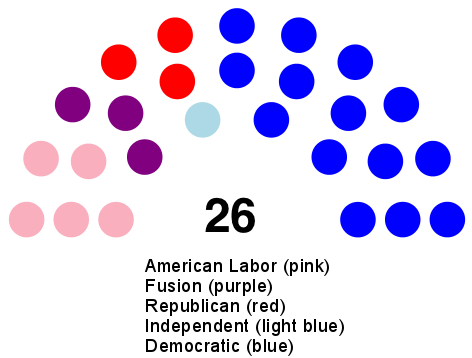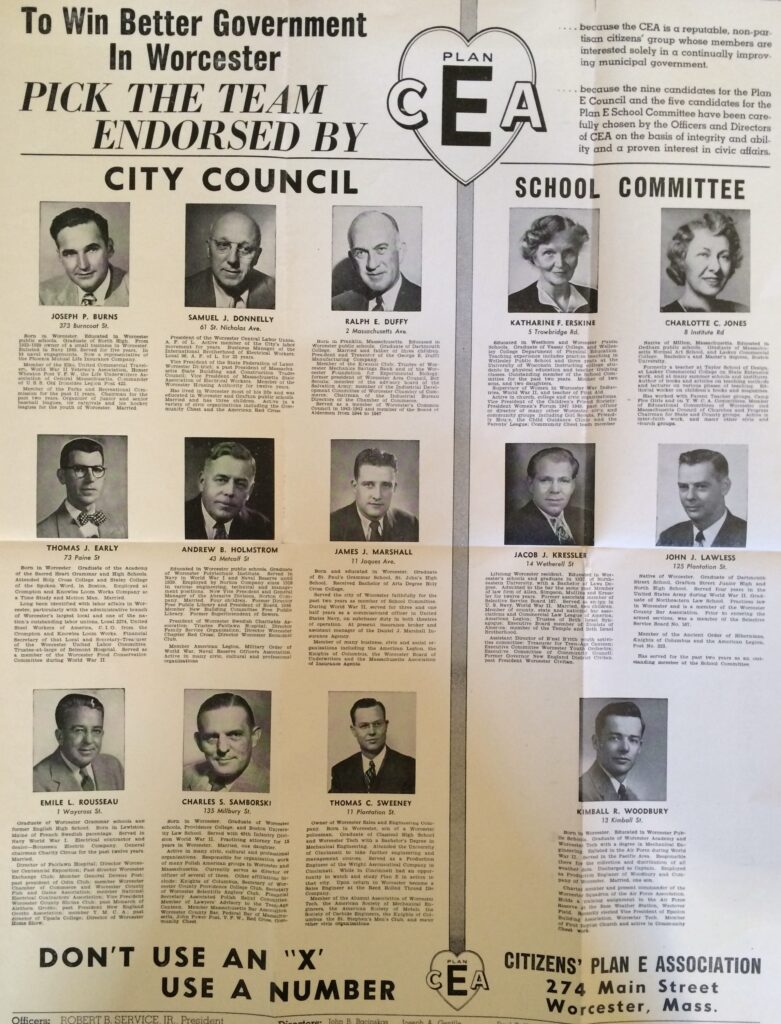Following up on yesterday’s post, here is a brief statement of the legislative reason for the repeal of the single transferable vote in US history. I have no reason think it would not apply to instant runoff as well. Both are fundamentally STV, and both are being promoted as a way to break up parties.
I have written elsewhere that STV opened the possibility of ‘vote leakage.’ Leakage usually refers to votes cast for one party but that help a different one win seats, via the transfer process.
Connecting this phenomenon to STV repeal required tracking leakage between coalitions, not among parties. New York City illustrates the logic. There, votes were expected to leak among a series of anti-Tammany parties.

In other cases, local parties were formed to keep votes away from the rumps of parties displaced by the reforms. This was a direct response to problems organizing STV-elected legislatures.

It didn’t work in the long run. Below is my go-to image for introducing people to the problem. It gives the percentage of roll-call votes in each legislative term on which some portion of said local party (Citizens’ Plan E Association or CEA in this case) teamed up with the opposition and thus defeated its own party’s position. This is known as a majority roll when we focus on the majority coalition, which the figure does. The link between the roll rate and STV repeal is clear. Chapter 7 here gives a detailed account of this and other such episodes, linking them to vote leakage as well.

Here’s why this is an issue for advocates. Let’s say the point of current reforms is to bring Republican moderates into coalition with Democrats. That would be analogous to the reason for the CEA above. What the graph shows is the reform failing to bind that coalition. It shows the reform eventually doing the opposite of what it was supposed to do.
This is one reason why I recommended party-list systems and maybe ‘fusion voting’ instead of STV and its derivatives. (Others have been equity and ease of implementation.)